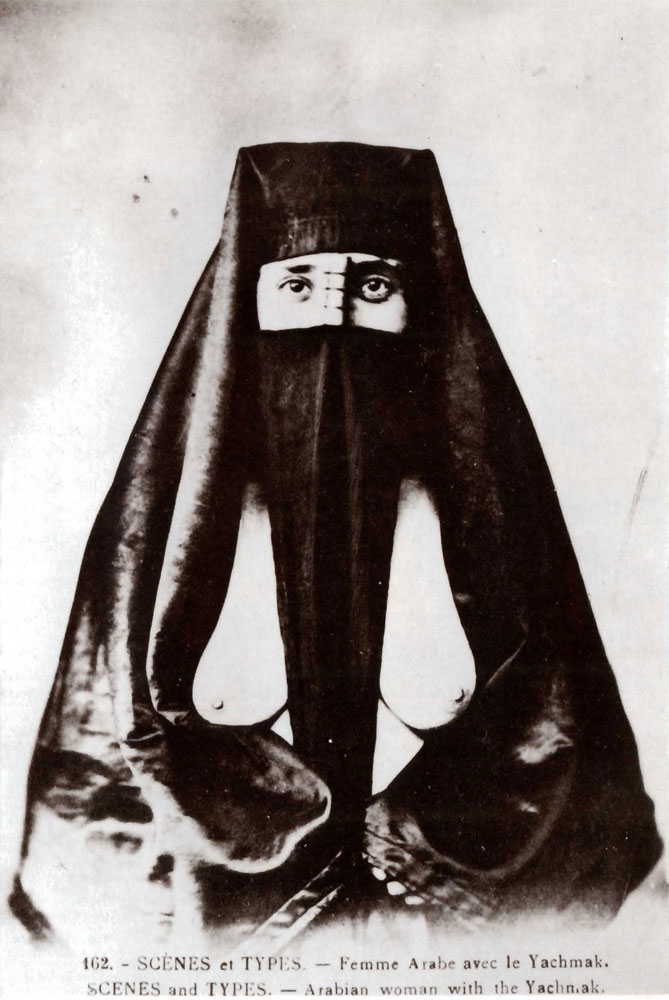Colonial Harem
The photographs below come from Malek Alloula’s Colonial Harem, a text that critically analyzes the sets of photographic postcards depicting early twentieth-century Algerian women.

Moorish Women Taking a Walk
Postcard from The Colonial Harem
This postcard shows a group of Moorish women veiled in white on a walk down a local street. Covered from head to toe, the women all look identical, with the long veils and billowing pants hiding not only their faces but their entire shape from the photographer’s camera. Images of the everyday life of Algerian women captured the audience’s imagination by allowing them a glimpse into the exotic daily life in the French colonial territory overseas. The women’s veils in this photograph seem to serve a contradictory purpose—intended to protect the wearer’s modesty by hiding her face and obscuring her body, the veiled shape ends up also being the very object that draws the photographer’s lens and our gaze.

Algeria: Dance of the Veil
Postcard from The Colonial Harem
Tales of the Arabian “belly dance” and the biblical Salome’s supposed “dance of the seven veils” made dancers popular subject s for Orientalist photographs and postcards. In this image, a young woman lifts her veil for the danse du mouchoir (“Dance of the handkerchief”). Images of dances and of women unveiling themselves were often marketed as photographs that captured the rituals and culture of Algerian society. However, the dancer’s costume, jewelry, and pose were most likely decided by the photographer so as to create an exotic and seductive image of what the fictional danse du mouchoir, one that would correspond to European fantasies.

Arabian Woman With the Yachmak
Postcard from The Colonial Harem
This surreal, disturbing postcard depicts an Algerian woman wearing a veil called a yachmak. The yachmak, a veiling style originally from Turkey equivalent to the niqab, is a veil meant to wrap around the upper and lower parts of the face so that only the eyes are exposed. However, this model’s veil is styled incorrectly: the woman’s cheeks and most of her nose are visible while the black fabric falls between her breasts leaving them directly exposed to the camera. This sexually explicit photograph makes no effort to portray the woman in a traditional setting. Used as a tool to draw the viewer’s attention to the woman’s exposed flesh, the veil de-humanizes the subject, creating body parts in isolation that do not make up a complete woman but rather pieces to be objectified and consumed. The woman’s eyes, which look directly at the viewer, are haunting and create a sense of unease that draws the viewer’s eyes back up to her face in spite of the photographer’s purposeful display of her chest.
Leave a Reply
You must be logged in to post a comment.
